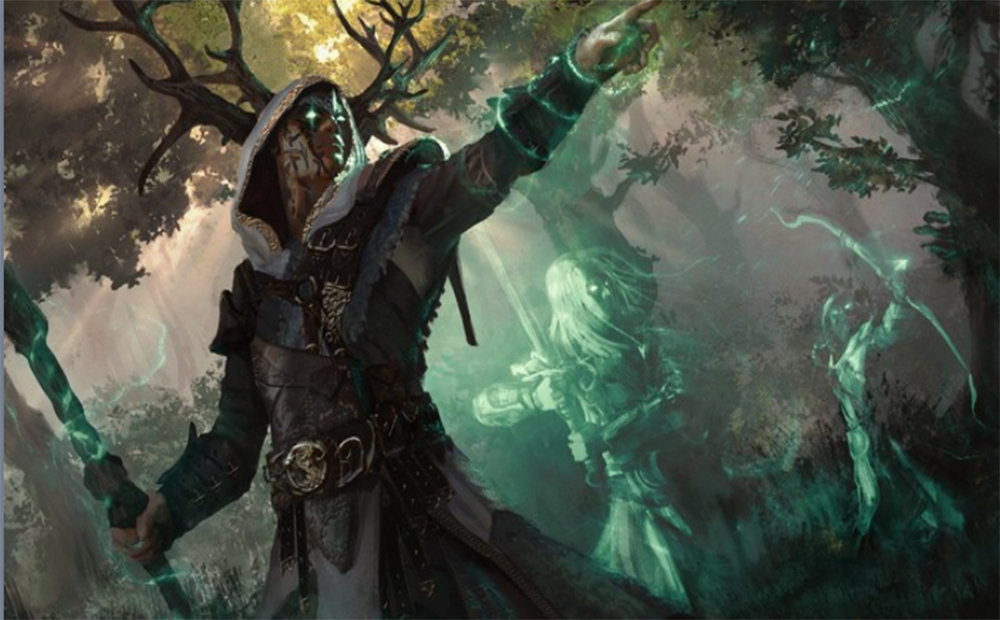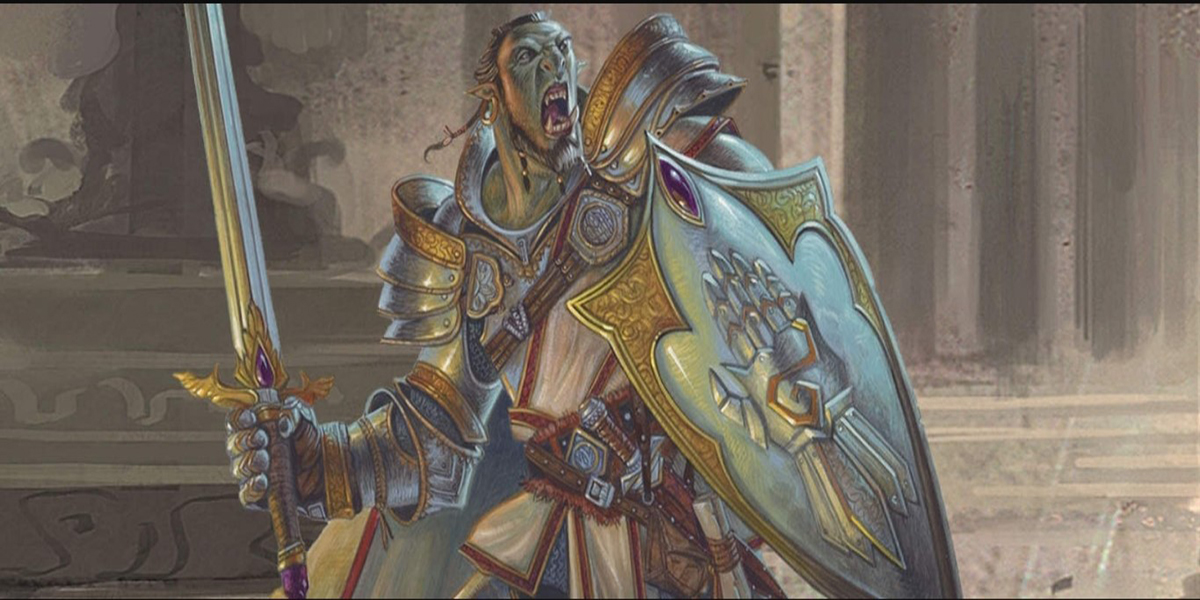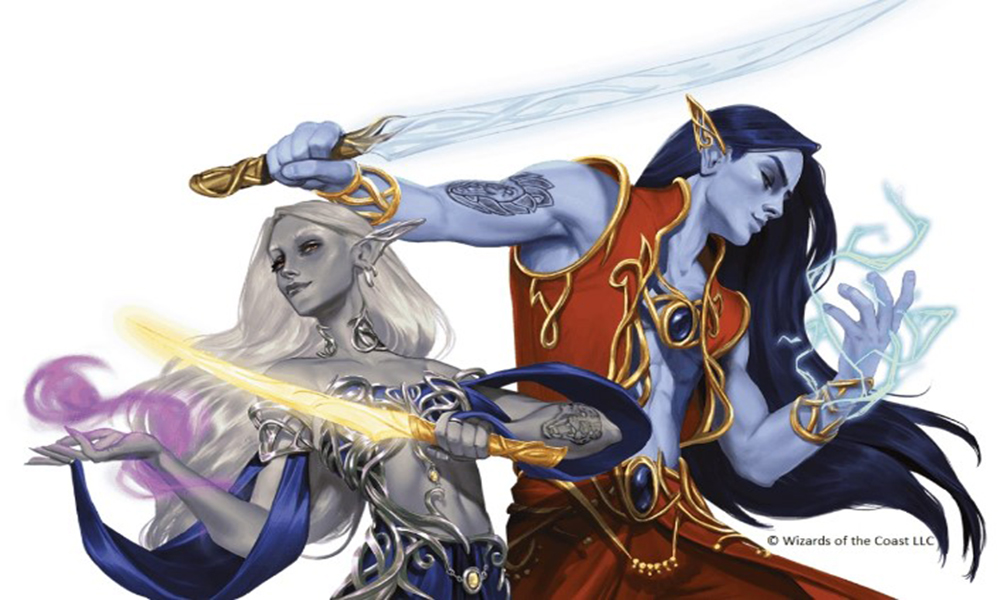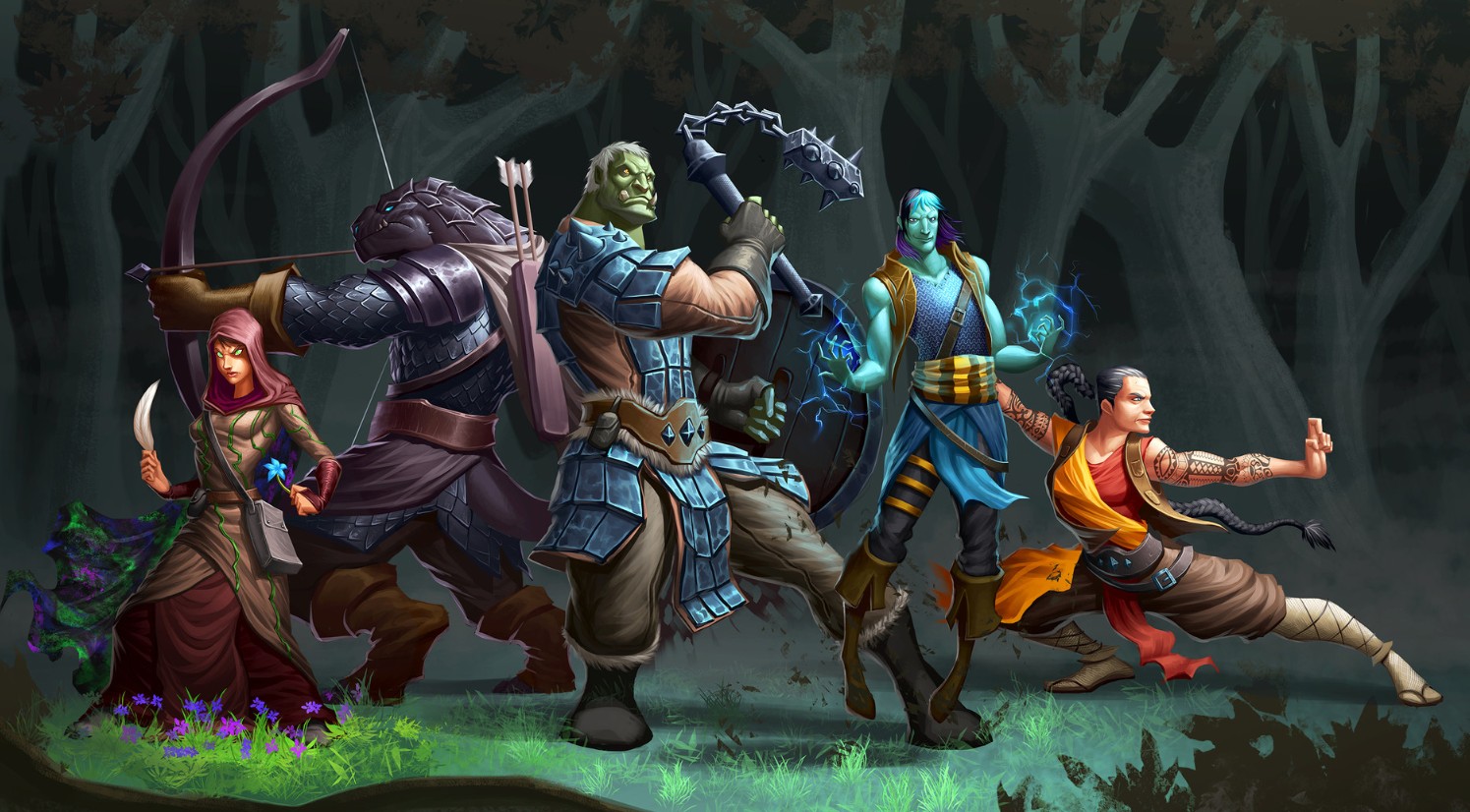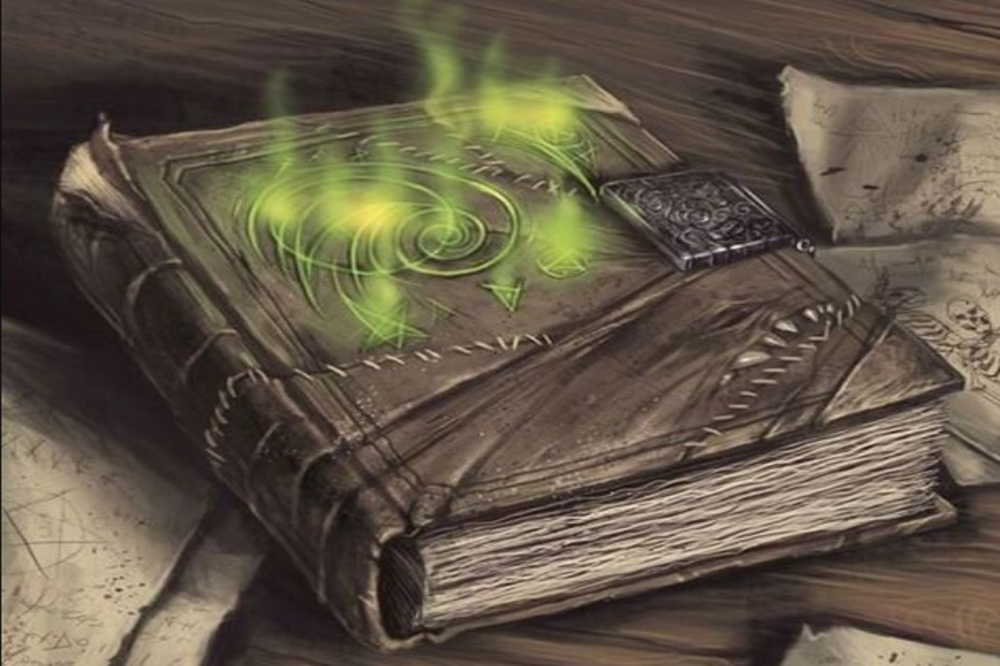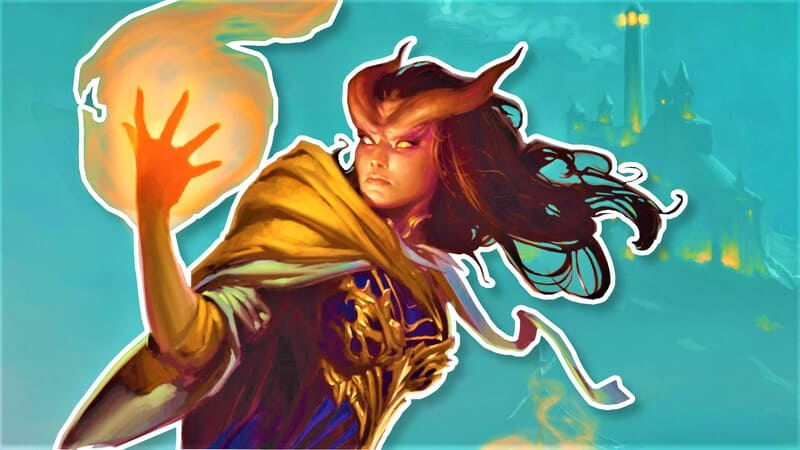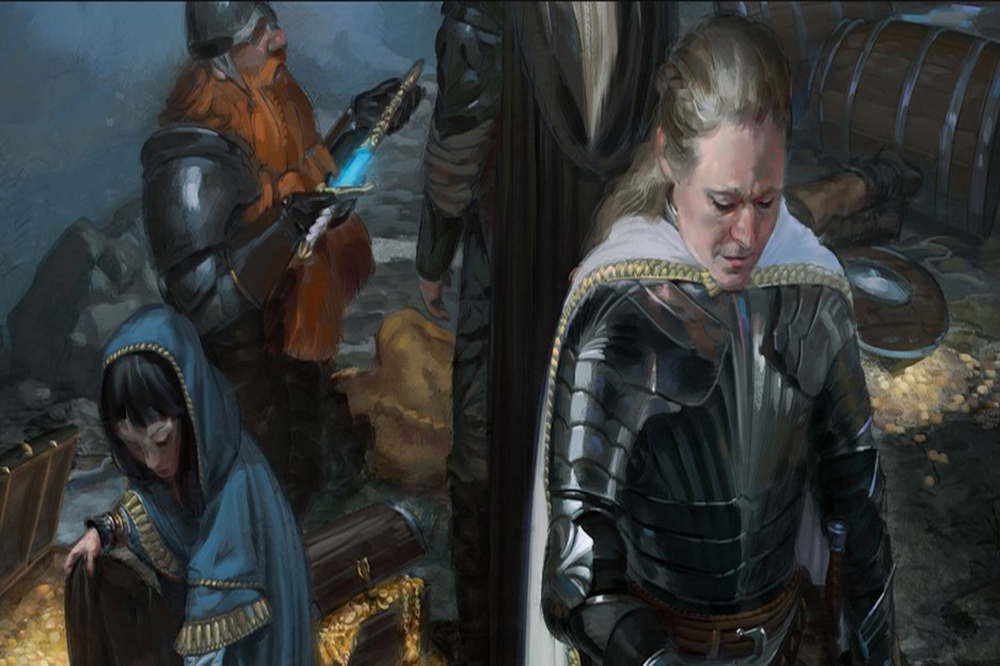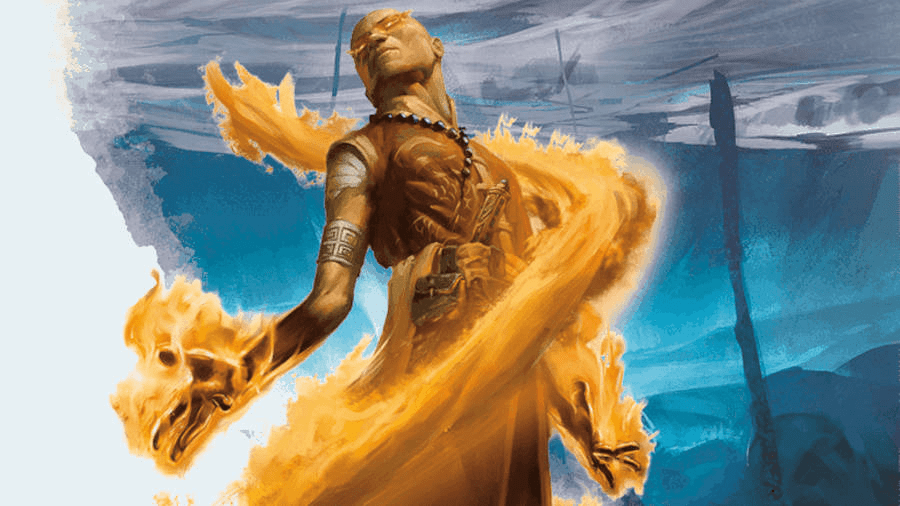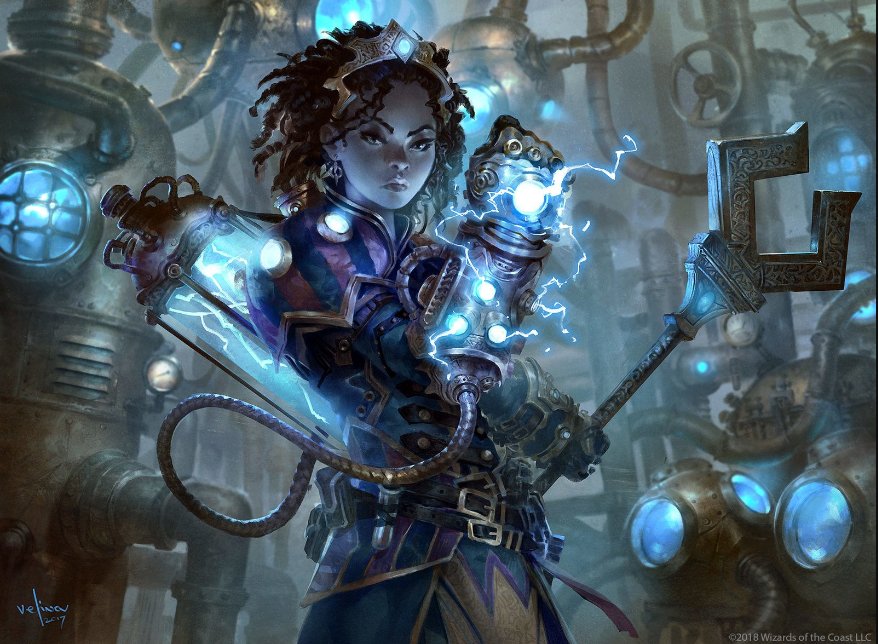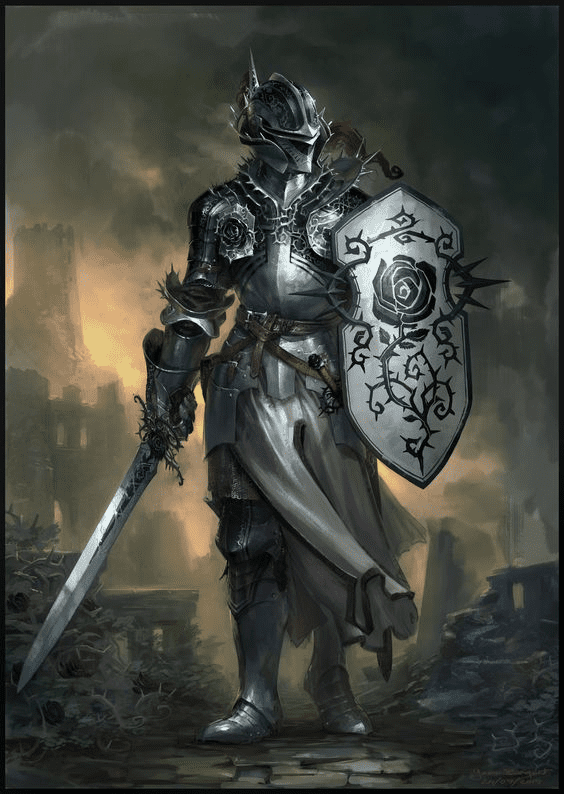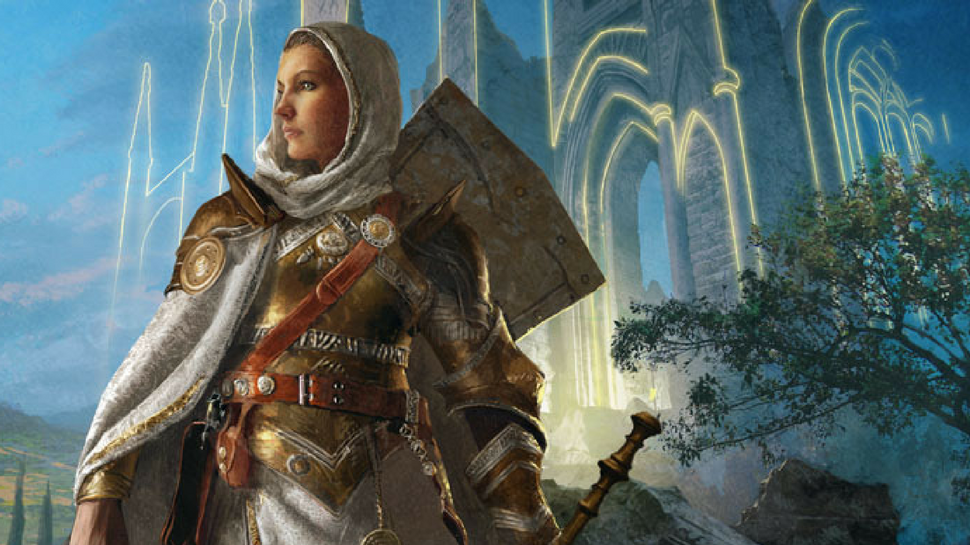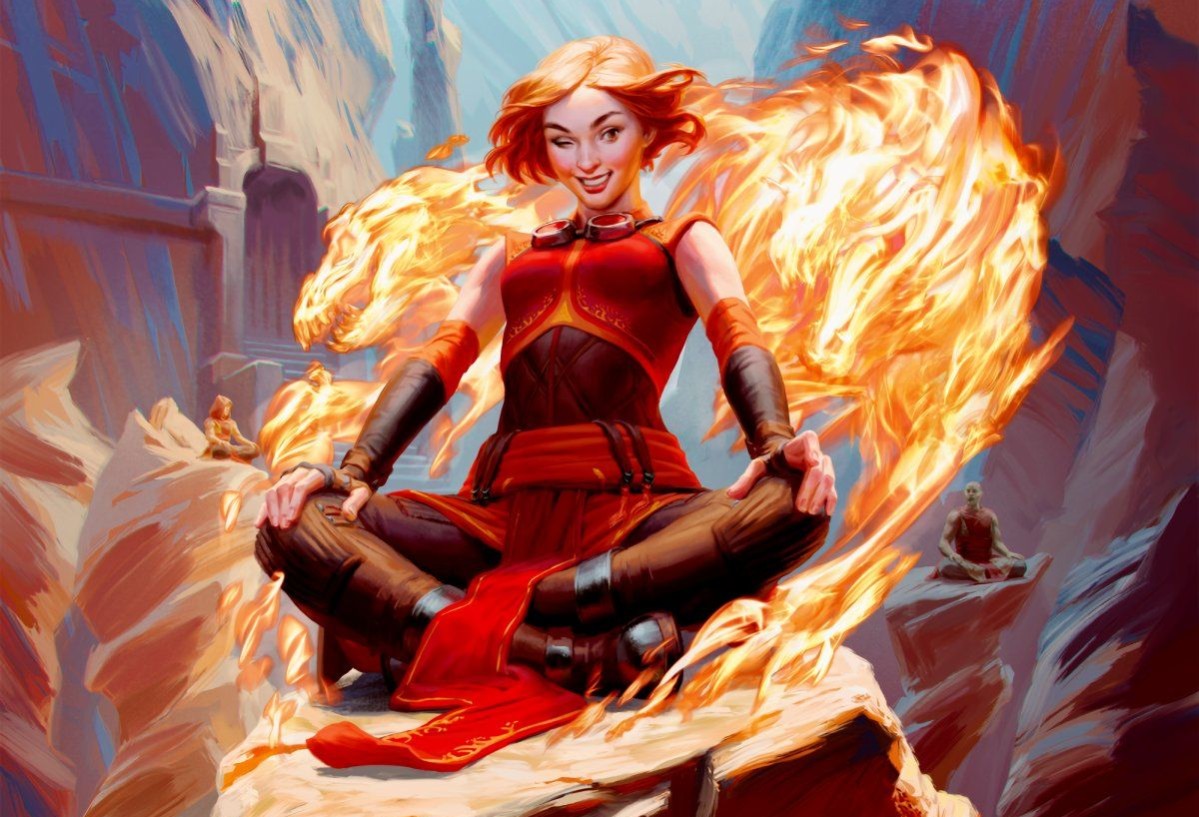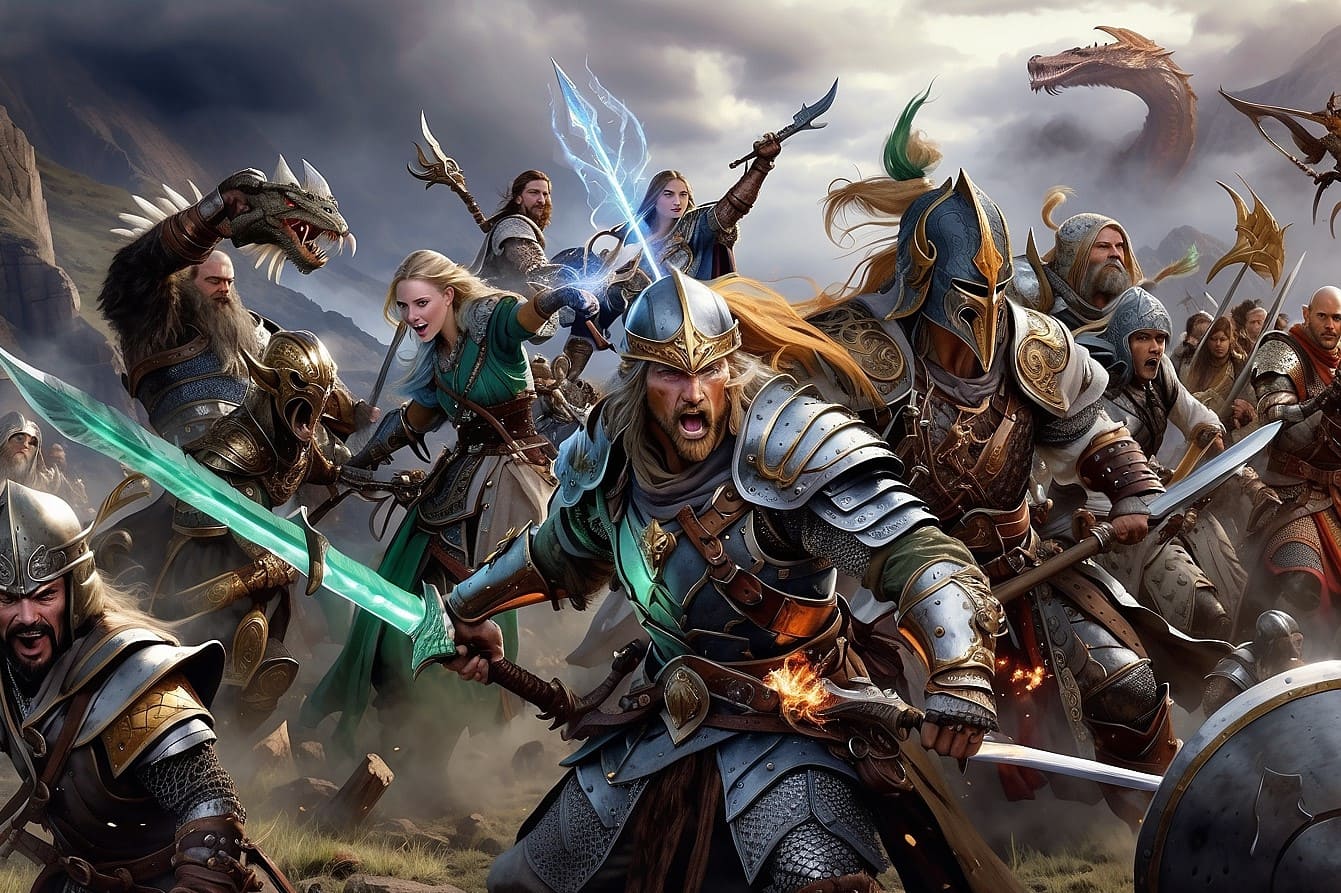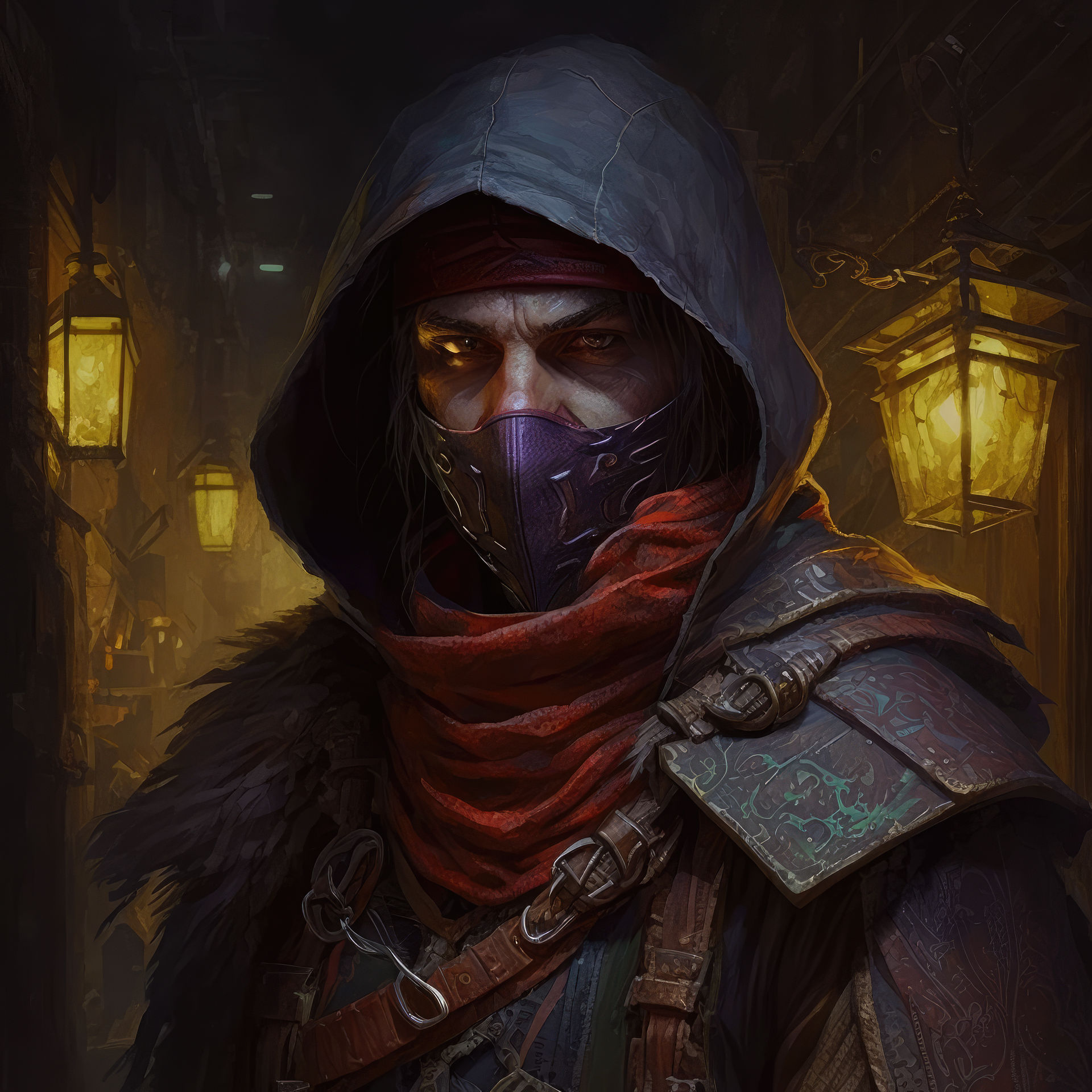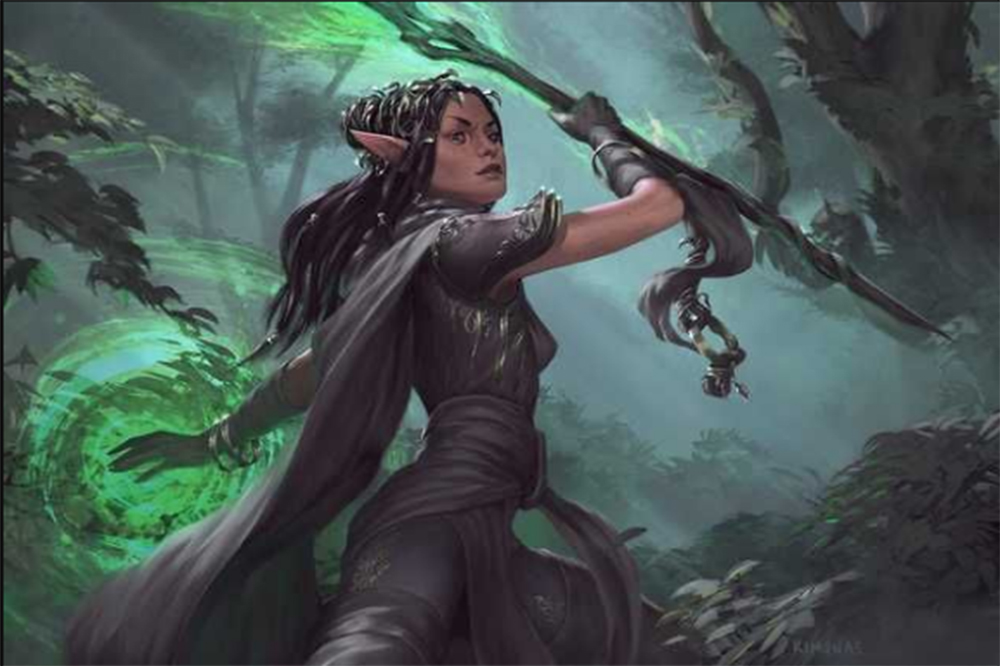
What makes a good wizard?
Mystic and magic. Spells and staves. A wide-brimmed hat and flowing robes. The wizard is one of the oldest and most iconic classes in all of Dungeons & Dragons history with access to the most powerful spells in the game.
Playing a wizard can get overwhelming though. You have to carefully consider your selection as you pick from the largest spell list of any 5th edition spellcaster. On top of that, each School of Magic (the wizard’s subclasses) brings its fair share of power to the table. Any player could do a lot of theorycrafting with all these options. Lucky for you, I’ll make things a bit easier with a few builds that make the most of the wizard’s potential.
**DISCLAIMER: These are meant to be cookie cutter builds, so feel free to tweak and choose for your adventuring needs. I’ll be using options from the Player’s Handbook (PHB), the Sword Coast Adventurer’s Guide (SCAG) and Xanathar’s Guide to Everything (XGtE).
3. The Clizard

The Clizard, a mage who taps into both divine and arcane magic.
Once a man of the cloth, our mage found enlightenment in the study of ancient tomes and innovation through magical research. He remembers the annals of his god and wields holy magic as needed, but the arcane is now his most potent weapon.
The “Clizard” is a fun nickname for this cleric-wizard multiclass, which will probably be the most complicated of the three builds (though not by much). The multiclass opens up our options by a lot, but we’re going to focus on combining the School of Abjuration wizard with the Knowledge domain cleric. Also, multiclassing is an optional rule in 5e, so make sure your DM allows it if you want to play a Clizard.
We exchange some of our wizard spell progression for access to healing and buffs from the cleric spell list. This build also gains access to medium armor and shield proficiency and features granted by a cleric domain. There’s no change in the spell slots you’ll have access to because both wizards and clerics count the same towards slot progression. But, you’ll have to keep track of prepared spells for each class. For example, you have access to only 1st-level cleric spells while you’ll learn higher-level wizard spells as you level up.
What this build is good for
- Being durable. Multiclassing into cleric gives our Clizard medium armor and shield proficiencies. This means that you’ll have about 16 to 19 Armor Class (AC) depending on your Dexterity and armor. These proficiencies also free you up from having to learn the mage armor spell.
- Extra healing and utility. A single level of cleric gives lets us prepare at least two spells from the cleric spell list. Now your wizard can also heal and buff using spells they don’t normally get!
- More cantrips. Cantrips are at-will spells that let you do magic without using spell slots. They do damage, provide utility, and even buff characters. Multiclassing usually gives spellcasters a lot more cantrips than usual. Once you’ve multiclassed at level 2, you’ll have a total of at least seven cantrips.
- More prepared spells. Since you prepare spells for each class separately, you will have, on average, more spells at your disposal each day. It’ll be up to you how to use your spell slots, though. Cleric domains also automatically give some freebie prepared spells.
Build Details
- Use the standard array for ability scores to get the following: 15 Intelligence, 14 Wisdom, 13 Dexterity, 12 Constitution, 10 Strength, 8 Charisma. You want at least a 13 in both Intelligence and Wisdom for multiclassing. Having at least 12 Dexterity works well with medium armor. Anything else, you could switch around.
- Starting off as human will bump up all of your ability scores by 1. If your DM allows variant human, use that option instead. Use the variant human racial ability score bumps to increase Intelligence to 16 and Dexterity to 14; take War Caster for the free feat.
- Hill dwarves are also good choices for clerics as are half-elves. Just try using a race with either Wisdom or Intelligence score bonuses. And don’t forget to apply them to your array!
- Choose backgrounds that fit with your character concept, or for skills proficiencies you really want. Sage or Acolyte are pretty safe bets for our Clizard, though.
- Start at level 1 in the cleric class. We begin with cleric because it gives us more hit points as well as the medium armor/shields proficiency early.
- Pick the Knowledge cleric domain. You now have the command and identify spells constantly prepared. You also choose two skills from Arcana, History, Nature, or Religion to have expertise in.
- You can prepare a number of cleric spells equal to your cleric level (1) plus your Wisdom modifier. Always prepare healing word and shield of faith. If you have over 13 Wisdom, choose the others from the following: bless and sanctuary.
- At level 2, take your first level in wizard. From here on, you’ll only be taking levels in the wizard class.
- At level 3, you’ll gain the arcane recovery feature and an arcane tradition. For the tradition, choose the School of Abjuration. You will need to cast an abjuration spell to activate your Arcane Ward, so shield of faith works really well here! The ward will have hit points equal to twice your wizard level plus your Intelligence modifier, and it will absorb damage in your stead until it reaches 0 hit points.
- Every time you gain an Ability Score Increase, make sure to increase your Intelligence by 2 until you reach a score of 20. Afterward, consider increasing your Constitution score. If your game uses feats, take War Caster or Resilient (Constitution) if you had not already acquired one or the other.
- As you increase your wizard levels, you will gain the following:
- At cleric 1/wizard 6, the ability to shield your allies using your ward.
- At cleric 1/wizard 10, you get to add your proficiency bonus to ability checks that are part of casting a spell (like with counterspell and dispel magic). This feature makes you especially potent against enemy mages.
- At cleric 1/wizard 14, you gain advantage on saving throws against spells and halve all damage you take from them for even more durability!
- For your Spell Mastery feature at level 18, take shield and misty step. You can now cast those spells as often as you like! This gives you persistent tankiness (when you’re not counterspelling) and fantastic bonus action mobility. Casting shield also replenishes your arcane ward, so it works even better!
Spellcasting is the biggest part of any spellcasting class. You’ll likely find spells that fit your needs for specific situations, so don’t hesitate to make those choices. Since you have access to some cleric spells, your choices are a more varied, too! Here are my recommended picks that are just great all around for the Clizard:
- Cleric cantrips: guidance, spare the dying, sacred flame
- Cleric 1st-level spells: healing word, bless, sanctuary, shield of faith
- Wizard cantrips: fire bolt, mage hand, minor illusion, prestidigitation, toll the dead (XGtE)
- Wizard 1st-level spells: absorb elements (XGtE), detect magic, find familiar, magic missile, protection from evil and good, shield, sleep, thunderwave
- Wizard 2nd-level spells: hold person, invisibility, mirror image, misty step
- Wizard 3rd-level spells: blink, counterspell, dispel magic, fireball, protection from energy
- Wizard 4th-level spells: banishment, dimension door, greater invisibility, otiluke’s resilient sphere, polymorph
- Wizard 5th-level spells: Bigby's hand, far step (XGtE), hold monster, synaptic static, telekinesis
- Wizard 6th-level spells: globe of invulnerability, mass suggestion, sunbeam, Tenser's transformation (XGtE)
- Wizard 7th-level spells: crown of stars (XGtE), etherealness, forcecage, plane shift, simulacrum
- Wizard 8th-level spells: antimagic field, feeblemind, maze, mighty fortress (XGtE)
- Wizard 9th-level spells: imprisonment, invulnerability (XGtE), true polymorph, wish
2. The Bladesinger
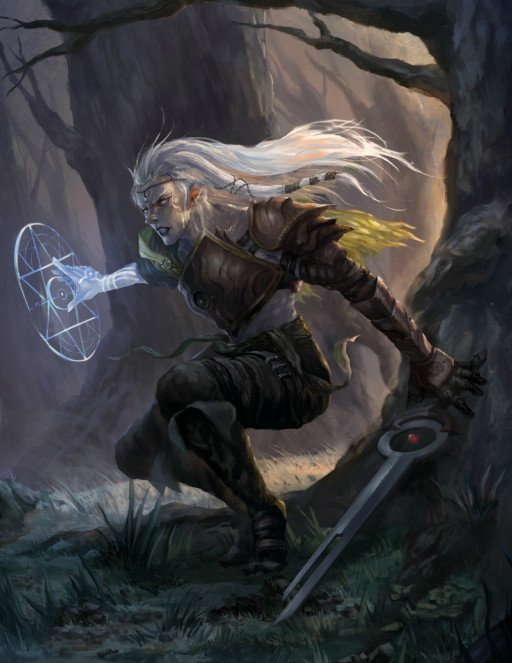
The Bladesinger, a mage who combines martial and might.
With a blade in hand, the wizard ducks and weaves through the battlefield. She strikes with her blade almost as often as she slings a spell. Even as an enemy strikes at her, a magical enchantment over the Bladesinger’s body bolsters her defenses against their blows. The Bladesinger is a “gish,” a character that combines magic with martial prowess.
We start our build by focusing on Bladesinging, a School of Magic from the Sword Coast Adventurer’s Guide. Bladesinging gives the wizard notable defensive buffs that allow her to more safely jump into the thick of battle and fight with her weapons. The awesome thing about this subclass is that you can also completely opt out of going into melee. Since you’re still a wizard, you can act from the backlines, casting spells while also boasting incredible survivability. As you gain more levels, you will likely focus on simply staying alive so that you can use your magic.
What this build is good for
- Having excellent defense and mobility. For a minute, the Bladesong feature bolsters your wizard’s defenses and movement speed. Later on, you’ll be able to reduce incoming damage by spending your spell slots.
- Superb AC. I’m giving AC its separate bullet point because it is the Bladesinger’s greatest defensive asset. Keep in mind that by stacking Bladesong’s effects with the mage armor, shield, and haste spells, your AC can reach a range of 27 to 29 depending on your Dexterity score. This AC will be near impossible to hit for many creatures until you get to higher levels (like level 11+). Just remember that your wizard will still be susceptible to damage and status effects that require saving throws.
- Maintaining concentration spells. Bladesong also adds your Intelligence modifier as a bonus to your concentration saves. Even when your wizard takes damage, you’re more likely to sustain your concentration spells, which will usually be buffs or battlefield control.
- Combining martial options with magic. The Bladesinger gains the Extra Attack feature, allowing her to make two strikes on each of her turns instead of just one. The Bladesinger can cast spells to improve their martial ability, such as buffs to their speed, defenses, or damage. At level 14, while Bladesong is active, the wizard adds their Intelligence modifier whenever they deal damage with their melee weapon, too.
Build Details
- Use the point-buy system to generate the following ability score array: 15 Intelligence, 14 Dexterity, 14 Constitution, 10 Wisdom, 10 Charisma, 8 Strength. The Bladesinger’s highest ability scores will be Intelligence, followed by Dexterity, and then Constitution. Wisdom is generally more important than Charisma or Strength.
- For backgrounds, Sage is a safe bet for most any wizard.
- We’ll use the elf race and the high elf subrace for this build. Their racial ability score bonuses increase Intelligence by 1 and Dexterity by 2, so our Bladesinger will have 16’s in Intelligence and Dexterity at level 1. High elves also receive training in longswords and shortswords, which will open up your choice for the weapon proficiency granted by Bladesinging.
- At level 2, choose Bladesinging for your School of Magic. The Bladesinger will take all 20 levels in the wizard class, so you’ll gain the following from the subclass:
- At level 2, Bladesong increases your AC and concentration saves by your Intelligence modifier, increases your speed by 10 feet, and gives you advantage on Dexterity (Acrobatics) checks.
- At level 2, your Bladesinger also gains proficiency with one weapon of your choice. The ideal weapon will have the finesse property, allowing you to use Dexterity for attack and damage rolls. Since high elves already receive shortsword proficiencies, this choice will likely be the rapier. You’ll also get light armor proficiency. It’s nice, but more often than not, you should use mage armor for a better AC bonus.
- At level 6, Extra Attack allows you to attack an additional time when you take the Attack action during your turns. Our gish likes this because it means doing more damage using our weapons.
- At level 10, Song of Defense lets you reduce the damage you take during Bladesong by using your reaction and spell slots. The reduction equals five times the spell slot level used.
- At level 14, Song of Victory boosts your damage with melee weapons, again while using Bladesong. This bonus equals your Intelligence modifier.
- Your Bladesinger will have a total of five Ability Score Increases between levels 1 to 20.
- The first four should be used to improve your Intelligence and Dexterity scores to 20. If you sling spells more than you swing your weapon, prioritize Intelligence. If it’s the other way around, prioritize Dexterity. Your last Ability Score Increase can go towards your Constitution score.
- If your game uses feats, consider picking up one of the following options: Dual Wield (if fighting with two weapons), War Caster, Mobile, Resilient (Constitution).
- For your Spell Mastery feature at level 18, take shield and mirror image. Shield lets you constantly maintain your ridiculously high AC. Mirror image further reduces the chances of you actually taking damage by tanking hits for you; it also uses your high Dexterity for your copies’ AC.
- For your Signature Spell feature at level 20, choose blink and haste. Both are powerful buffs that are now constantly prepared for you. You can also cast them once without spending spell slots each day. Both can even affect you at the same time, so it makes for a powerful offensive and defensive combination.
Bladesingers have a similarly defensive focus as the Clizard. However, we’re also going to entertain more martial-oriented spells that boost our defenses and mobility, too. Try to cast your buff spells before combat starts!
- Cantrips: fire bolt, booming blade (SCAG), green-flame blade (SCAG), mage hand, minor illusion, prestidigitation
- 1st-level spells: absorb elements (XGtE), expeditious retreat, find familiar, longstrider, mage armor, shield, thunderwave
- 2nd-level spells: blur, mirror image, misty step, shadow blade (XtGE)
- 3rd-level spells: blink, magic, fly, haste, lightning bolt, slow, thunder step (XtGE)
- 4th-level spells: banishment, dimension door, fire shield, greater invisibility, polymorph
- 5th-level spells: Bigby's hand, conjure elemental, hold monster, steel wind strike (XGtE)
- 6th-level spells: contingency, disintegrate, Otto's irresistible dance, Tenser's transformation (XGtE)
- 7th-level spells: forcecage, plane shift, prismatic spray, simulacrum
- 8th-level spells: feeblemind, illusory dragon (XGtE), mind blank, power word stun
- 9th-level spells: foresight, meteor swarm, true polymorph, wish
1. The Fatemaster
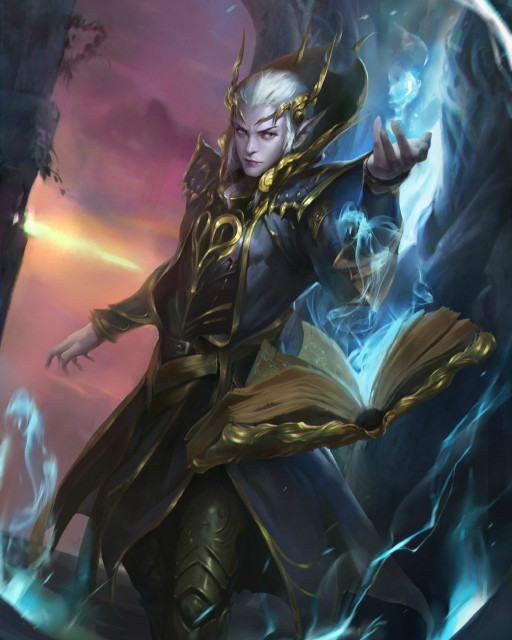
The Fatemaster, a mage who controls the present by manipulating the future.
When a wizard graduates from being a master of magic to master of the game, he becomes the Fatemaster. He has seen events of the past, present, and future. At his whim, he bends reality to force a course of action into success...or failure. The Fatemaster is the prime form of the generalist wizard, the spellcaster that has the tools for any situation. Fair warning though, this build provides the tools to make your wizard succeed, but it relies a lot on player intuition and preparation than the other builds.
My approach to this build focuses on the School of Divination’s ability to literally dictate the results of most d20 rolls. Arguably more than any wizard, the Fatemaster benefits from potentially learning all the spells the class has to offer. Preparation for the day’s challenges is key to this build’s success. We’re going to focus especially on buffs, debuffs, and battlefield control, with sprinkles of damage.
What this build is good for
- Manipulating results. The Divination wizard’s ability to change the result of a creature’s attack roll, ability check, or saving throw can tip the scales of any situation. You can make a monster fail a crucial saving throw or, with enough luck, turn an ally’s attack into a critical hit.
- Casting spells and making them work. The Fatemaster can have more...faith in having their higher-level spells work against enemies. This build focuses primarily on spell play by making the most of the spells you cast.
- Any situation, with enough insight. The Fatemaster’s premise is based on the most traditional view of the toolbox wizard: you prepare spells each day to fill your toolbox, which you’ll then use to solve the day’s problems. Our Fatemaster focuses especially on guaranteeing results. Part of this effort relies on the results of the d20 dice that a School of Divination wizard rolls each day. The rest of the work comes from preparing just the right spells, but this could take more effort and prediction on your part as the player to really make effective.
Build Details
- For this build, we can have more flexibility in our ability score arrays. You can use the standard ability score array to get the following: 15 Intelligence, 14 Dexterity, 13 Constitution, 12 Wisdom, 10 Charisma, 8 Strength.
- You can also use point-buy to generate your own array. Our top priority is maximizing Intelligence. Survivability and maintaining concentration will come next, so having good Dexterity and Constitution scores are a must. Wisdom also improves an important save, so it takes priority over Strength and Charisma.
- The preferred race here is variant human. The racial bonuses would bump up our Intelligence to 16 and Constitution to 14. Plus, if feats are being used in your game, your Fatemaster can immediately pick up the Lucky feat. Lucky gives you three luck points that let you reroll any attack rolls, ability checks, or saving throws you make; you can also force an enemy to reroll an attack roll against you. It’s a very good feat.
- Halflings also get a special mention due to their Lucky racial feature. This version of Lucky lets them reroll any 1 on an attack roll, ability check, or saving throw. The downside to this racial option is that they don’t naturally have bonuses to their Intelligence score.
- High elves generally make for well-rounded wizards, too.
- You can pick your Fatemaster’s background based on desired skill proficiencies. For now, we’ll go with the classic Sage background.
- At level 2, choose the School of Divination for your subclass. The Fatemaster wants to take all 20 levels in wizard to maximize their access to the spell list. The subclass grants:
- At level 2, the Fatemaster gains access to the bread and butter of this build: Portent. This feature allows you to roll two d20s and record those values. Anytime during the day, you can replace any attack roll, saving throw, or ability check you see (whether your own or someone else’s) with one of those pre-determined rolls. Portent is what lets you dictate the result of an action.
- At level 6, Expert Divination lets you regain spell slots when you cast divination spells with a 2nd-level spell slot or higher. Useful if you find yourself casting a lot of divination spells but not so much otherwise.
- At level 10, your Fatemaster gains the Third Eye. This gives you a choice between four benefits that you can switch during rests: darkvision, ethereal sight, greater comprehension, and see invisibility. The most potent choices are either ethereal sight or see invisibility, but pick the benefit that will most likely come up during your adventuring day.
- At level 14, the Fatemater receives an upgrade to their Portent with Greater Portent. Now, you can roll three d20s and record those values for the day instead of just two. More opportunity to manipulate the dice is fantastic!
- The Fatemaster will have a total of five Ability Score Increases going from levels 1 to 20.
- Use the first two to reach 20 Intelligence (or three if you didn’t have 16 Intelligence at level 1). Afterward, you can prioritize having more Dexterity or Constitution.
- If your game uses feats, consider the following options: Lucky (if you had not already acquired it), Alert, War Caster, Resilient (Constitution).
- For your Spell Mastery feature at level 18, take shield and invisibility. Shield is a go-to defensive spell for wizards of all kinds and levels, so having it cost no resource is fantastic. Invisibility is just a great all-rounder spell that having it on hand without needing spell slots makes it even better!
- For your Signature Spell at level 20, choose hypnotic pattern and counterspell. Those two spells are now constantly prepared for our Fatemaster, and both can be cast once without spending a spell slot. Hypnotic pattern provides excellent crowd control over a wide area. Counterspell is one of the most potent ways to shut down enemy mages. You can even use your Portent for either if you need to.
The Fatemaster excels at forcing the issue of battlefield control and negative spell effects against enemies. Many of these spells require a saving throw, which our Fatemaster can manipulate. My recommended list includes a range of picks meant to address almost any situation:
- Cantrips: fire bolt, light, mage hand, minor illusion, prestidigitation, ray of frost, toll the dead (XGtE)
- 1st-level spells: absorb elements (XGtE), comprehend languages, shield, detect magic, find familiar, magic missile, sleep, Tasha's hideous laughter
- 2nd-level spells: detect thoughts, hold person, invisibility, misty step, phantasmal force, suggestion
- 3rd-level spells: blink, counterspell, dispel magic, fireball, haste, hypnotic pattern, lightning bolt
- 4th-level spells: banishment, confusion, dimension door, otiluke’s resilient sphere, polymorph
- 5th-level spells: Bigby's hand, dominate person, geas, hold monster, modify memory, synaptic static (XGtE), telekinesis, wall of force
- 6th-level spells: disintegrate, flesh to stone, magic jar, mass suggestion, Otto's irresistible dance
- 7th-level spells: forcecage, reverse gravity, plane shift, prismatic spray, simulacrum
- 8th-level spells: dominate monster, feeblemind, maze
- 9th-level spells: foresight, meteor swarm, psychic scream (XGtE), true polymorph, wish

